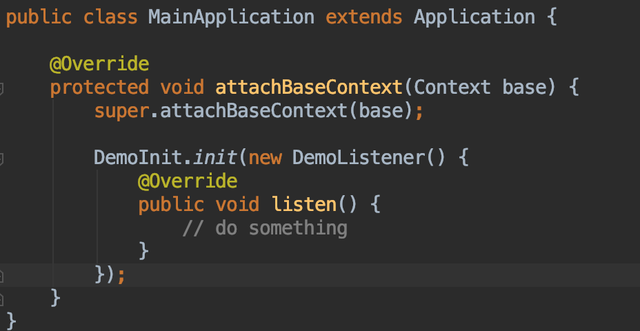紧急仲裁员程序:困境下的现实意义
文章来源于CBLJ商法 ,作者郭馨
紧急仲裁员程序(Emergency Arbitrator Procedure ,EAP)是国际商事仲裁领域中供当事人寻求临时救济的一种机制。该程序填补了当事人在仲裁庭组成前无法直接从仲裁程序中获取紧急救济的空白,减轻了当事人向一个甚至多个法院申请救济的负担。自2006年国际争议解决中心(ICDR)率先启用EAP以来,境内外主要仲裁机构相继将该程序纳入了仲裁规则。
但与此同时,经过十余年的实践,紧急仲裁员通过该程序所作命令的可执行性仍然是引起广泛关注的问题。虽然《承认及执行外国仲裁裁决公约》《纽约公约》)为仲裁裁决的承认与执行提供了框架,但紧急仲裁员命令适用《纽约公约》首先要满足两项概念性条件:
(1)紧急仲裁员(Emergency Arbitrator)属于《纽约公约》意义下的“仲裁员”(arbitrator);(2)紧急仲裁员所作出的命令(可能以decision、order或award的形式作出)属于《纽约公约》意义下的“仲裁裁决”(arbitral award)。
由于各法域对于上述两个关键概念的解释存在显著差异,尤其针对第二项中隐含的“终局性”要件是否满足争议较大,故紧急仲裁员命令是否能够如同普通仲裁庭所作出的仲裁裁决那样适用《纽约公约》在缔约国广泛执行具有不确定性。
而就各法域内的立法或司法态度而言,除新加坡、香港等少数法域明确通过修法予以认可外,紧急仲裁员命令的可执行性亦不明晰。但根据主要国际仲裁机构的实践,将EAP纳入仲裁规则仍然具有现实意义。
域外执行
紧急仲裁员命令是否能够得到承认与执行并不必然受制于仲裁地所在法域的法律限制。以中国内地为例,即便其现行法律体系是否支持EAP尚不明朗,但这并不妨碍当事人根据案件需要在组庭前寻求将在域外执行的EAP下临时救济。这为当事人寻求紧急救济和更加有效地应对争议提供了可能。
例如,2017年末,北京仲裁委员会/北京国际仲裁中心(北仲)受理了中国大陆首例适用EAP的仲裁案件。在该案中,紧急仲裁员作出了许可部分临时救济申请的决定。根据《香港仲裁条例》,即使是在香港以外地区作出的紧急仲裁员决定,也得以在香港执行。故该案申请人顺利在香港高等法院获得了域外执行。
自愿遵守
紧急仲裁员命令可执行性的不确定性也并不必然影响该程序的有效性和当事人目的的实现。就现有数据来看,大部分当事人都选择了自愿遵守,向法院申请执行并非必经之路。
根据国际商会(ICC)于2019年4月发布的关于EAP的报告,在ICC作出的23个部分或全部许可临时救济申请的紧急仲裁员命令中,只有三个存在未被当事人自愿遵守的情况。ICDR在尝试EAP10年后同样观察到,向法院申请执行并非必要,大部分当事人都认可紧急仲裁员的裁判并遵守其命令。一方面,诸多仲裁规则本身规定了紧急仲裁员命令对当事人具有约束力。另一方面,当事人并不希望因违反紧急仲裁员命令而给其后续的仲裁程序造成可能的不利影响。在一些情况下,对紧急仲裁员命令的不遵守可能会给其仲裁裁决造成实质性影响。
在部分法域,仲裁庭有权裁决因当事人不遵守紧急仲裁员命令而造成的损失,或者将该行为纳入确定仲裁费用承担的考虑因素,或者甚至有权直接针对该行为施加处罚。同时,不遵守命令方也承担着仲裁庭针对其行为作不利推断的潜在风险。
促进和解
此外,紧急仲裁员命令的可执行性问题更加阻碍不了该程序积极发挥促进和解的“副作用”。根据前述ICC报告,在ICC受理的80起EAP申请案件中,有25起案件在仲裁庭的最终裁决作出前,以和解方式结案,并且其中有四起案件在紧急仲裁员命令作出前就已经达成和解。
在前述北仲EAP案例中,当事人同样在仲裁庭正式组成后积极协商,并最终以和解方式结案。从该个案分析,紧急仲裁员在其作出的决定中重点审查并分析了“申请人的仲裁请求是否有合理的胜诉可能”。虽然这种分析并不必然限制正式仲裁庭的判断,但仍能够帮助当事人在仲裁程序早期建立起对案件部分事实及法律问题的共识。因此,即便当事人在后续仲裁程序中提出了更为充分的抗辩并策略性地提出程序异议,EAP对是非曲直的初步分析仍然可以成为调整双方当事人预期、促进和解的基础。
尽管EAP在国际范围内的实践仍存在不确定性,但笔者认为该程序近年来在主要仲裁地和仲裁机构的规则中得到的实际运用展现了这一机制的“生命力”。就我国内地现行法律体系而言,如何更好地解决法院与仲裁机构在临时救济等方面的衔接,为当事人提供更优质的仲裁体验,使我国内地成为更具吸引力的仲裁地,仍需进一步探索和创新。
作者:北京仲裁委员会/北京国际仲裁中心仲裁秘书郭馨

EAP Proves A Handy Tool in Uncertain Times
The Emergency Arbitrator Procedure (EAP) is a mechanism in the field of international commercial arbitration available to parties seeking interim relief. To fill the gap between the outset of the arbitration and the constitution of the arbitral tribunal, interim relief from an EAP can elevate parties’ procedural capacity without bothering state court proceedings.
Several major international arbitration institutions have incorporated EAPs into their arbitration rules since the first one came into practice at the International Centre for Dispute Resolution (ICDR) in 2006.
Although the EAP has existed for more than a decade, the enforceability of emergency arbitrator (EA) orders has no universal assurance so far. Two embedded thresholds in the Convention on the Recognition and Enforcement of Foreign Arbitral Awards (New York Convention), which is made for recognizing and enforcing arbitral awards, were to be crossed before it could play a role: (1) whether an EA constitutes an “arbitrator” within the meaning of the New York Convention; and (2) whether an EA’s order (in the form of a decision, order or award) constitutes an “arbitral award” within the meaning of the New York Convention.
Due to the different approaches to these two tests, especially considering the implied test of the “finality” of an arbitral award, the uncertainties promise no universal assurance unless lawmakers take an aggressive approach to interpreting the New York Convention in contracting states.
The attitude to enforceability varies from jurisdiction to jurisdiction. Except for a few jurisdictions such as Singapore and Hong Kong, which explicitly gave legislative teeth to EA orders, the answer is far from straightforward.
However, the significance of EAPs has been widely recognized by the users and institutions among the international arbitration community.
ENFORCEMENT OF EA ORDERS
The enforcement of EA orders is not necessarily being restricted by the legislation of the seat, and thus parties are always able to seek enforcement elsewhere. In the case of China, while the legislation is silent on EAPs, parties find no prohibition from seeking interim relief from an EAP prior to the arbitral tribunal being constituted, as long as the enforcement takes place outside China. It is a better approach for emergency relief, and for effective dispute resolution.
For instance, at the end of 2017, Beijing Arbitration Commission/Beijing International Arbitration Center (BAC/ BIAC) administered the first EAP case ever requested in China. In that case, the EA rendered a decision partially granting the interim relief requested by the claimants. Since emergency relief was enforceable in light of the Hong Kong Arbitration Ordinance, even if it was granted elsewhere, the claimants successfully sought enforcement of the EA decision in Hong Kong High Court.
VOLUNTARY COMPLIANCE
The uncertainty of enforceability does not necessarily frustrate the expectation of initiating and conducting an EAP. According to available data, the majority of users of an EAP tend to voluntarily comply with the EA orders, so court assistance is not necessary for enforcement.
In the Commission Report on EAP issued by the International Chamber of Commerce (ICC) in April 2019, only three out of the 23 EA orders issued by the ICC, partially or fully granting the interim relief requested, were not voluntarily complied with.
Similarly, after a decade of EAP practice, the ICDR has also observed that, for most of its EAP cases, court proceedings are not a must. The parties usually are subject to the jurisdiction of the EA and obligated to abide with EA orders. For one thing, most arbitration rules themselves provide that the EA orders shall be binding on the parties.
More importantly, the parties do not wish to cause any adverse impact on their subsequent arbitral proceedings in any way, due to their non-compliance. There are instances where non-compliance with an EA order may materially affect the arbitral award.
In certain jurisdictions, the arbitral tribunal is empowered to award damages for non-compliance, or to take it into account in deciding the costs, or even to impose penalties/sanctions for non-compliance. Meanwhile, the non-complying party bears the potential risk that the arbitral tribunal may draw adverse inference from its non-compliance.
SETTLEMENT PROMOTION
In addition, the uncertainty of the enforceability does not block the light of settlement promotion, which serves as a “side effect” of EAPs. According to the above-mentioned ICC report, out of 80 EAP cases administered by the ICC, 25 were settled before the final arbitral awards were issued, and four of that 25 were settled even before the EA order was issued.
Similar to the implications of the ICC report, in the BAC/BIAC’s EAP case, the parties also actively negotiated after the formal constitution of the arbitral tribunal, and finally concluded the case by settlement. Taking this case as an example, in its analysis to make the decision, the EA highlighted the matter of “reasonable possibility to succeed on the merits”. Although this was only the EA’s prima facie analysis, and shall not bind the arbitral tribunal, it might help the parties to build consensus on some factual as well as legal issues of the case at an early stage of the arbitration proceeding.
Thus, even if the parties of that case did present more persuasive defences and strategically raised procedural objections in subsequent arbitration proceedings, the EA’s preliminary analysis of the merits can still serve as a basis for adjusting the parties’ expectations, and thus promote settlement.
Although it may be too early to address the certainty of an EAP’s enforcement under the New York Convention, it is fair to say that the practice relating to EAPs across main arbitration hubs and institutions thrives.
In the context of China, bold ideas of connecting courts and arbitration institutions will respond to calls for better dispute resolution, while co-ordinating their roles in making and enforcing interim relief will help promote China as a more appealing seat of arbitration.
Jolie Guo is a case manager at Beijing Arbitration Commission/Beijing International Arbitration Center (BAC/BIAC)

微信:北京仲裁(ID:bac_biac)关注北仲,实时获取仲裁业界新动态。




















评论